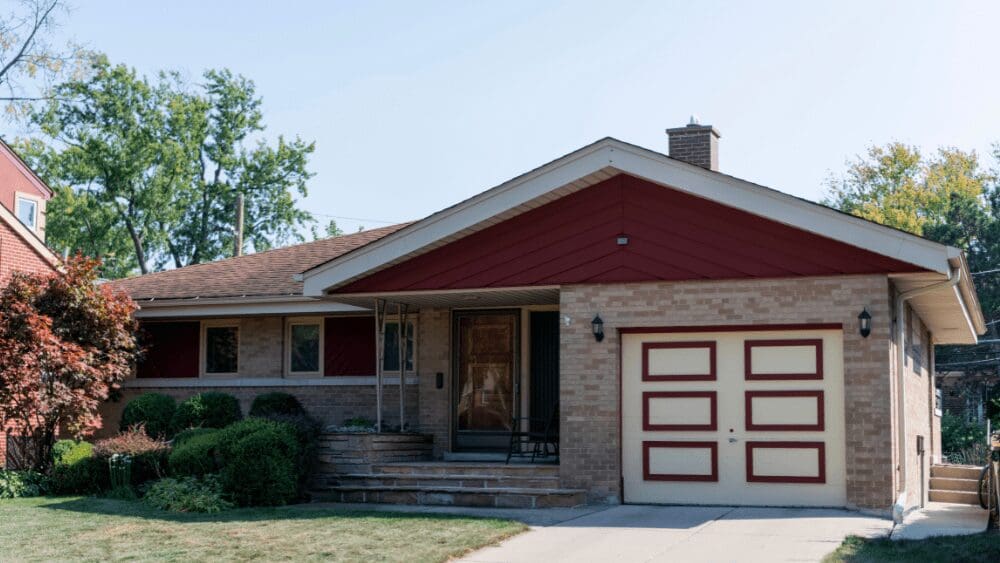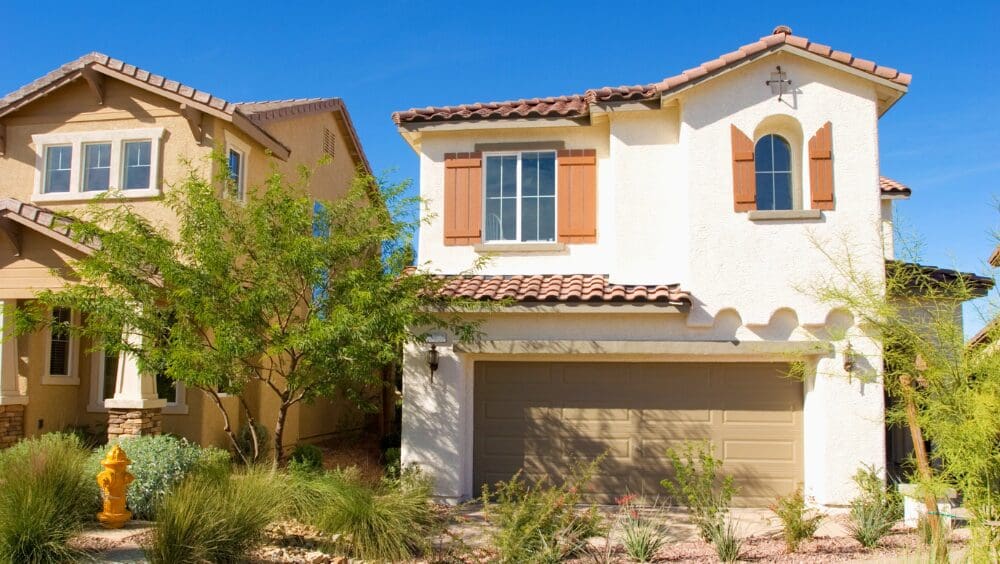
Tiny houses are cute, they’re affordable, they’re trendy — what’s not to love? Many of today’s homeowners seem to be redefining the American Dream by minimizing belongings in order to increase their quality of life. Without a doubt, tiny homes are on the rise, with a whopping 67% increase in the number of tiny homes from 2016 through 2017. Tiny homes are generally defined as a dwelling between 100 and 400 square feet, though the specifics can vary from house to house. Tiny homes may be stationary or moveable (distinguished by the abbreviation OW, or “on wheels”). Some include simple, minimalistic finishing choices, while others feature a few luxuries, such as screened porches or jetted tubs. Is building a tiny home the right choice for you? To learn more about tiny home builds, we talked to six tiny homeowners across the country — including Maura Allard, an expert Realtor and tiny homeowner. Allard assures potential tiny homebuyers and builders that the market is growing for these types of properties: “They’re selling like hotcakes.” In fact, tiny homes are also a great choice for investors, as she’s found out firsthand. These six homeowners have shared all the details; from motivation to finances and pitfalls to benefits. Take it from them: tiny homes are awesome… but building one may not be as easy as it seems. If you’re considering a tiny house, take a peek into their stories to help determine if building a tiny home is right for you. Melanie Copeland, a tiny homeowner and advocate in Virginia, built her tiny home in seven days. That’s right — a complete home in a week! She’s been living in her tiny home along with her husband and two large dogs for two years now, and they appreciate the stress-free lifestyle that their DIY tiny home affords. Copeland began her tiny home adventure by enrolling in a workshop led by Incredible Tiny Homes. She was required to assemble her own workforce of helpers and bring them along for seven days of intense building. At the end of the week, she left with a livable tiny house on wheels. Later, she added finishes that would help it feel like “home,” including a staircase and hammocks. Because they live in a coastal state that is prone to hurricanes, Copeland and her husband decided it was best to keep their home mobile so that they could pack up and leave in case a storm hits. But the majority of the time, they are content to stay put on their own land. Copeland says she watched for what she calls “junk land” — meaning, a piece of property that nobody wanted. When she spotted a burned-down house on a wooded lot with a stream running through it, she knew it was the perfect spot for their tiny home. Today Copeland is job-free by choice, enjoying the simplicity, peace, and lower cost of living that her tiny home provides. She’s the Virginia state chapter leader for the American Tiny House Association, where she now helps pave the way for others who wish to embrace the tiny home lifestyle. You can connect with her efforts at Serenitas Tiny Living. Washington tiny homeowner Jessica Rienstra and her husband had their tiny home built in 2018. Although they contracted all the work out, they made their own design decisions; She says that customization is the key to making a tiny house work for you. “You should prioritize what is important to you,” Rienstra explains. “Literally, if you want a crafting station, you can have one. If you want a gourmet kitchen, you can have one. If you want to host eight people, you can do that. Just take your time and think about your priorities before you even think about design.” When you’re building a tiny home, the customizations are really only limited by your imagination. It all comes down to having a flexible and innovative builder. Rienstra says that their tiny home build went smoothly thanks to their builder, Tiny Idahomes, who helped anticipate problems and brainstorm solutions. They worked to incorporate everything on the Rienstras’ wishlist, including a jetted soaking tub and 3” spray foam insulation. With so much attention to detail, the Rienstras and their cats have had no problem adjusting to the tiny home lifestyle. To maintain the necessary level of minimalism, the couple uses creative solutions, such as vacuum bags for winter coats. “Our rule of thumb is, if we can’t make it comfortably fit in our home, it doesn’t belong in our life.” For more on their tiny home adventure, follow along on Instagram: @tinytotravel. Angela Harkins started her tiny home journey with a land purchase in Georgia when she was 25 years old. She intended to be a homeowner by the time she turned 30, and thanks to her tiny home, that dream is coming true. Harkins purchased a used tiny home for “A heck of a hard-to-find deal,” had it moved to her property, and is currently in the process of renovating it for her needs. She’s on track to move in before her goal! Like many tiny homeowners, Harkins was highly motivated by the financial freedom to be found in the tiny house lifestyle. As a group, tiny homeowners have 89% less credit card debt and 55% more savings than the average homeowner. Harkins obtained a loan for her two acres of undeveloped land, but the rest of her tiny home expenses have been completely out-of-pocket. With the help of family and friends, she’s done 100% of the work over time, so she is still free from housing debt. Harkins says one of the biggest hurdles she’s had to overcome has been all the red tape of zoning, permits, and inspection. But with some creative thinking, she’s been able to work with her local building and development department to get things done. It’s important to speak to authorities about tiny home codes in your county, since laws vary greatly. For Harkins, her choice to pursue tiny home living has really paid off. “Before I knew about tiny homes, I thought I would have what had become the standard at that point: 30 years of mortgage debt. Because I avoided that debt at an early age, it’s going to have a great and exponential effect on my financial freedom.” Wanda Glover’s main motivation in pursuing a tiny home was to live close to her family. Her 0.82-acre wooded lot is just two miles away from her daughter, and she’s lived in her stationary tiny home for more than two years now. Glover’s stationary, custom-built home includes 10-foot ceilings, a full-size stove and oven, and a walk-in closet. Because she lives in South Carolina, she also had it built to Miami-Dade hurricane codes for safety. There’s even a porch swing — an addition insisted upon by Glover’s granddaughter — and a pull-out sofa for sleepovers. The end goal of being near family helped Glover through quite a few setbacks in her tiny home build. Zoning, building, and permitting issues turned what should have been a two-month build into a process that took about a year and a half overall. Glover cautions potential tiny home-builders, “Do your homework! Know exactly how many times you will need to have property surveyed. Each piece of land has rules beyond what the county says — research those. If there are easements, verify them upfront. Also, smaller builders do not have their own crews, so there will be a pause during each step.” “Honestly, I probably could have bought an older home for what I spent,” Glover acknowledges — but she maintains that this is the right choice for her. She craved the cleanliness of a new build, she wanted something that was easy to maintain, and she didn’t want an HOA (homeowners association). Plus, being close to her loved ones is priceless! “Living tiny has always appealed to me,” says Kelsey Rasmuson of Arizona. Her and her partner, Ryan Dailey, decided to embark on the adventure together. They located a plot of land and decided to jump in! Their home is under construction and should be completed soon. After the land purchase, the couple looked into prefabricated home plans from Green R Panels. With the plans in hand, they realized they’d need to make some modifications. For one thing, they had to add electrical, mechanical, and HVAC plans. They also discovered that for resale purposes in their area, it was best to have two bedrooms and two bathrooms, so they added on to the plans and went from there. Rasmuson says that with these additions, the building process is taking longer than expected, but that they’re looking forward to the end product. The couple is doing a lot of the work themselves, though they have opted to contract professionals for concrete, plumbing, and electrical work. “If you’re thinking of building, just go for it!” Rasmuson says. “It wasn’t as scary a leap as taking on a bigger endeavor.” Though their home could be considered on the larger side of the tiny home scale, the couple looks forward to minimizing their possessions and leaving a smaller carbon footprint in their new dwelling. Finally, Maura Allard, a top real estate agent in Peabody, Massachusetts, invested in a 540-square-foot tiny home with the intention of renovating the property as a rental. Her seaside tiny home is steps from the water, and she knew that she’d have tenants clamoring to live in this cozy location. After purchasing the home, she worked with a contractor to take down a wall, creating an open concept living space that works best for a tiny space. She made design choices that would optimize the square footage, such as a dual-purpose island, recessed lighting, stand-up shower, and additional cabinetry. The result was stunning, and she immediately had multiple applications for renters. Young professionals and retirees seem to enjoy the privacy and pet-friendliness offered by tiny homes as opposed to apartments. In addition, tiny home vacation rentals not only make for a great investment strategy, but they also serve as a way for potential tiny homebuyers to “test drive” the living arrangements. Overall, the tiny home trend doesn’t seem to be going anywhere. So is building a tiny home right for you? With so many different ways to go tiny, could you design a tiny home that fits all your needs? Perhaps the first step is meeting with a trusted, top-performing real estate agent in your area. The right agent can help you navigate land purchases, building loans, and more. Is it time for you to go tiny?Case study 1: Do it yourself
The details
Case study 2: Anything is possible
The details
Case study 3: Financial freedom
The details
Case study 4: Prioritize people
The details
Case study 5: Go bigger, if needed
The details
Case study 6: A great investment



